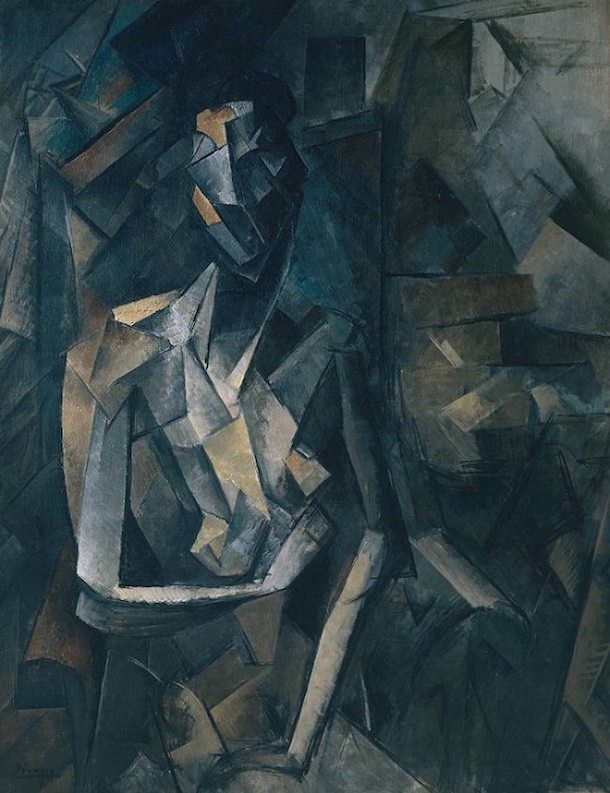Cubism
"Cubism was an attack on the perspective that had been used for 500 years. It confused people: they said,
'Things don't look like that!'"
One of the most influential art movement of the 20th century, Cubism was founded around 1907 and 1908 by Pablo Picasso and Georges Braque with the aim to reject the traditional techniques of perspective and refuting the idea of art as pure imitation of nature. By breaking objects and figures down into distinct areas or planes, the artists aimed to propose a revolutionary new approach to represent reality. Explore Cubism by starting from What is Cubism? and browse our curated list of artworks from cubism painters such as Pablo Picasso, Georges Braque, Juan Gris and others.
Analytic Cubism
The Analytic Cubism developed between 1910 and 1912. The name ‘analytic’ coined by Juan Gris suggests that the technique involved a close examination and analysis of objects in order to translate it into geometric shapes, angles and lines. In this phase the artists restricted their subject matter to the traditional genres of portraiture and still life and also limited their colours to earth tones and muted greys. Although Picasso and Braque's works were often similar in appearance, their separate interests showed through over time. Braque tended to show objects exploding out into fragments, while Picasso rendered them magnetized, with attracting forces compelling elements of the pictorial space into the center of the composition.
The main characteristics of analytical cubist paintings are:
- they appear as a busy interweaving of planes and lines with the subjects fractured, or broken up;
- they are painted using a limited range of dark colours (mainly blacks, greys and ochres);
- there is very little tonal differentiation used: the general tone of works tends to be muted with a similar dark tone used across the paintings.
Text by Cristina Motta
